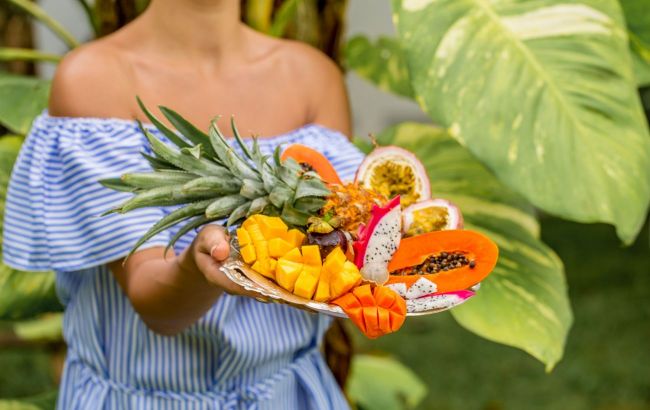8 exotic fruits everyone should try
 Exotic fruits that are good for health (photo: Freepik)
Exotic fruits that are good for health (photo: Freepik)
Sometimes you want to treat yourself to something sweet, but classic desserts have become boring for many. One of the best variants is to try unusual exotic fruits, according to the WebMD website.
Star fruit (carambola)
It is a sweet fruit with citrus, apple, and plum flavors native to Southeast Asia. It turns golden yellow when ripe.
Each fruit contains less than 40 calories, but a lot of fiber and vitamin C.
Before eating it, you just need to wash and cut it - no need to peel the skin.
Avoid this fruit if you have kidney problems. The star fruit contains oxalic acid, which forms kidney stones.

Carambola (photo: wikipedia)
Jackfruit
The jackfruit is the world's largest fruit, native to India.
It has a sweet flavor, depending on how ripe it is. It is also rich in vitamin C, B and potassium. Some health food stores sell ready-to-cook jackfruit in cans or bags.

Jackfruit (photo: wikipedia)
Dragon fruit (pitaya)
Dragon fruit grows on a cactus native to Central and South America.
Scoop out the crispy pink or white flesh with a spoon. The fruit has a small black seed and tastes like kiwi or pear.
Dragonfruit is high in fiber, vitamins, and minerals and may help maintain healthy gut bacteria.

Dragon fruit (photo: wikipedia)
Breadfruit
This football-sized fruit has been a staple of the Pacific island for thousands of years because of its bread-like texture.
Fat-free and gluten-free, it is rich in complex carbohydrates, fiber, and potassium.

Breadfruit tree (photo: wikipedia)
Passion fruit
Passion fruit is native to South America. The fruit is named after the five-petaled flower of the plant.
It is rich in potassium and fiber, with only 17.5 calories per fruit. Cut the fruit in half, then remove and eat the seeds and pulp.

Passion fruit (photo: wikipedia)
Durian
Durian is a southeastern fruit. It is named the king of fruits because of its custard-like flavor.
The spiky fruit is rich in iron, vitamin C, folic acid and potassium. Eat durian fresh or use it in desserts such as ice cream.

Durian (photo: wikipedia)
Horned melon (Kiwano)
This impressive-looking fruit is of African origin. You should eat the bright green jelly-like interior together with the soft seeds.
Use it in salads, add it to yogurt, or turn it into a smoothie or juice. Kiwanis is rich in antioxidants, including vitamin A, and is low in calories.

Horned melon (photo: wikipedia)
Mangosteen
This fruit is about the size of a tangerine. It has hard purple skin and soft white flesh and a unique flavor.

Mangosteen (photo: wikipedia)
Earlier, we reported on 5 fruits that continue to actively ripen after you buy them.
We also wrote about the benefits of fruit and berry seeds.

